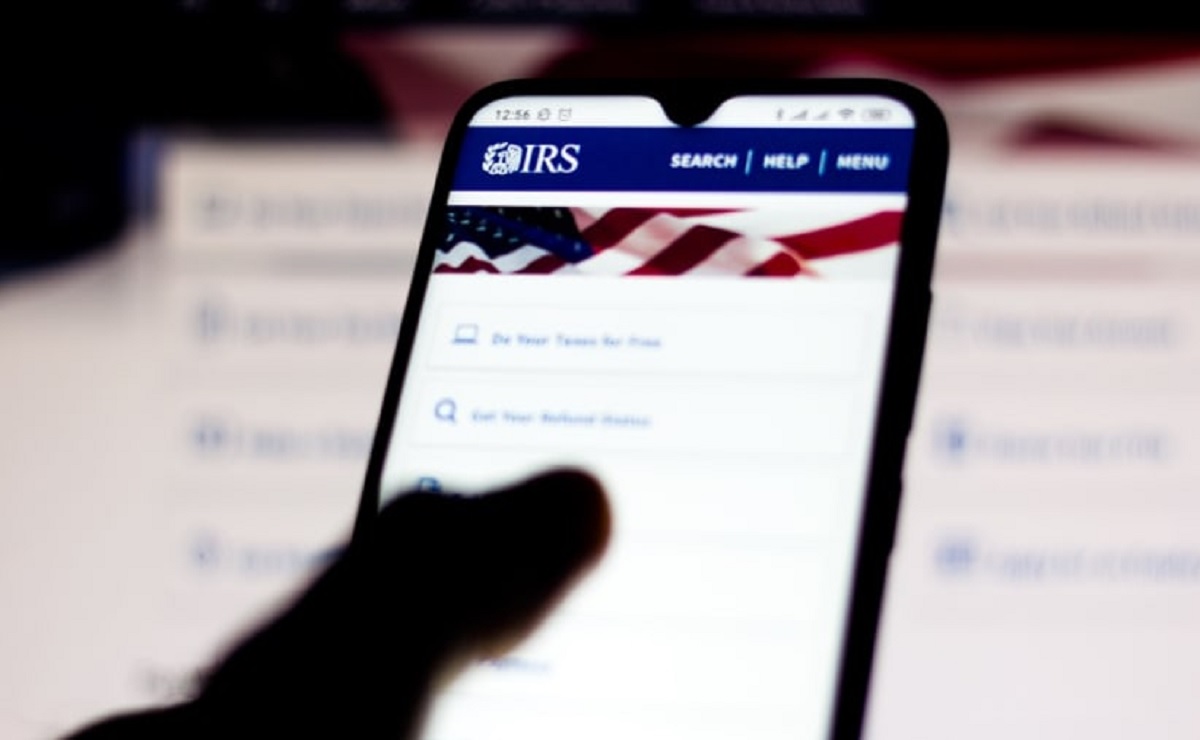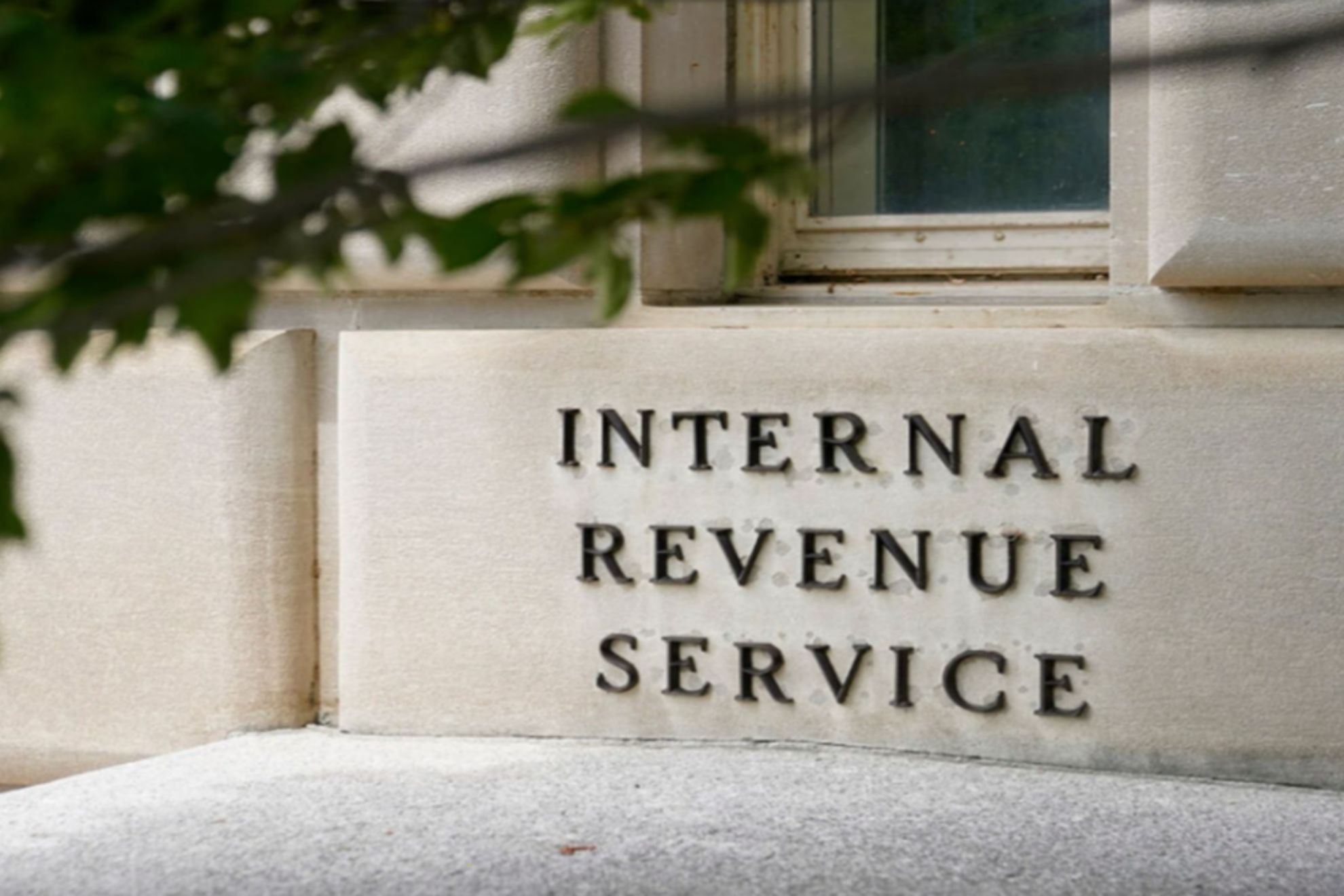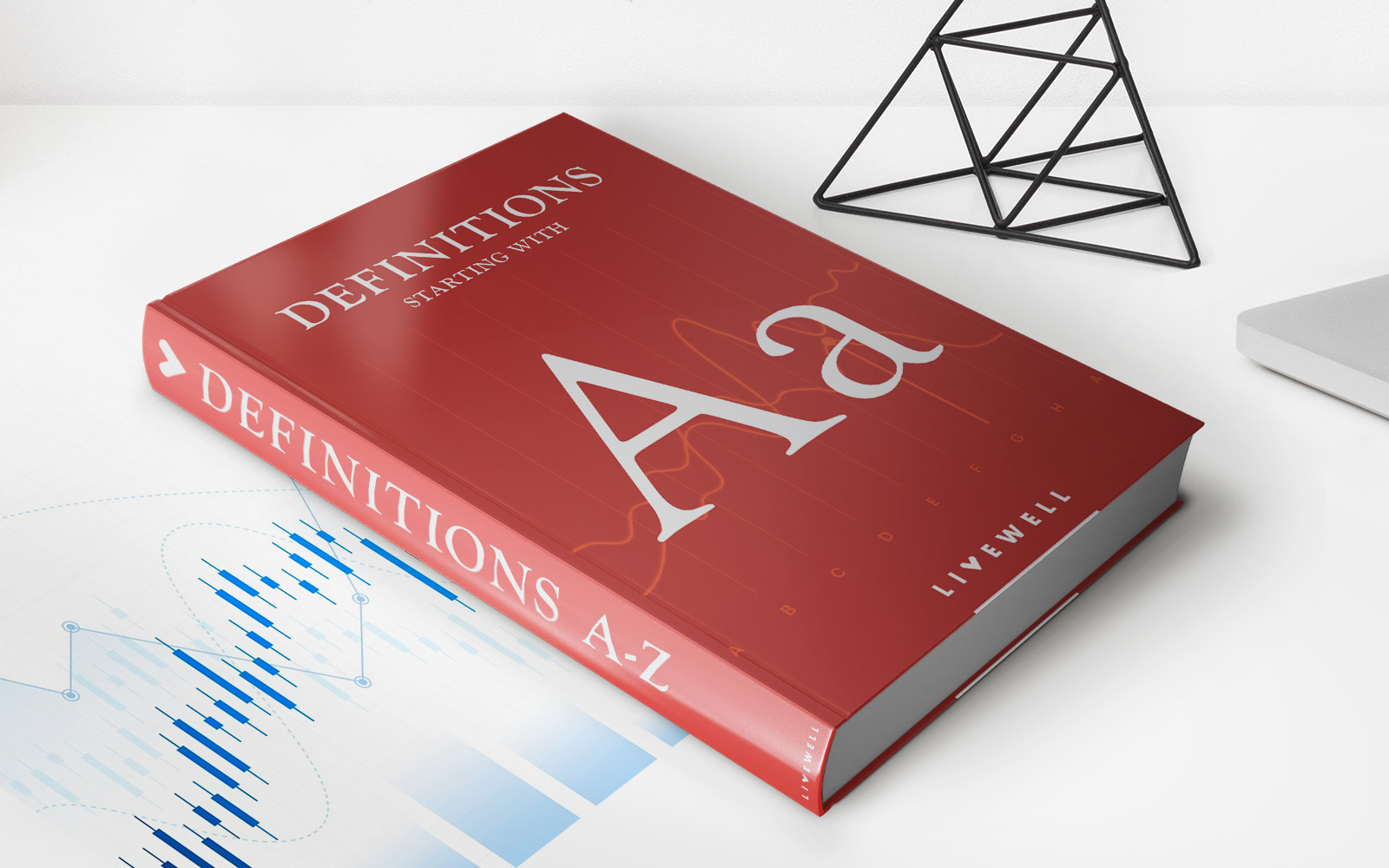

Finance
What Does IRS Code 570 Mean?
Published: November 1, 2023
Discover the meaning of IRS Code 570 in the world of finance and gain insights on how it impacts your tax obligations and financial planning.
(Many of the links in this article redirect to a specific reviewed product. Your purchase of these products through affiliate links helps to generate commission for LiveWell, at no extra cost. Learn more)
Table of Contents
Introduction
Understanding the ins and outs of the Internal Revenue Service (IRS) can be a daunting task, especially when it comes to deciphering the various codes and regulations. One such code, IRS Code 570, holds significant importance in the realm of finance and tax planning. In this article, we will explore what IRS Code 570 entails and its implications for individuals and businesses.
IRS Code 570, also known as the “Lifetime Learning Credit,” is a provision within the tax code that offers eligible taxpayers the opportunity to reduce their tax liability by claiming educational expenses. This code was designed to encourage individuals to pursue higher education and acquire new skills by providing them with financial incentives.
The Lifetime Learning Credit under IRS Code 570 is available to both traditional and non-traditional students, including individuals who are pursuing a degree, acquiring job-related skills, or simply to enhance their knowledge in a particular field. Unlike other education-related tax benefits such as the American Opportunity Credit or the Tuition and Fees Deduction, the Lifetime Learning Credit is not limited to a specific number of years of post-secondary education.
Now that we have a basic understanding of what IRS Code 570 is, let’s delve deeper into its purpose and the key provisions and implications it holds for taxpayers. Understanding the eligibility requirements and application process for IRS Code 570 will help individuals determine whether they can take advantage of this tax benefit. We will also explore the potential benefits and drawbacks of utilizing this code, as well as answer some commonly asked questions to provide a comprehensive understanding of IRS Code 570.
So, if you’re curious about how IRS Code 570 can potentially impact your tax situation and educational pursuits, read on to discover everything you need to know about this important provision of the tax code.
Overview of the IRS Code 570
IRS Code 570, also known as the Lifetime Learning Credit, is a tax provision that offers eligible taxpayers the opportunity to reduce their tax liability by claiming educational expenses. It is an important provision for individuals and businesses alike, as it provides financial incentives for individuals to pursue higher education and acquire new skills.
The Lifetime Learning Credit, under IRS Code 570, is available for both undergraduate and graduate education, as well as for courses that improve job skills. Unlike other education-related tax benefits, such as the American Opportunity Credit or the Tuition and Fees Deduction, the Lifetime Learning Credit is not limited to a specific number of years of post-secondary education. This makes it a valuable option for individuals of all ages and educational pursuits.
One key aspect of IRS Code 570 is that it allows eligible taxpayers to claim a tax credit based on a percentage of their qualified educational expenses. These expenses may include tuition, fees, books, supplies, and equipment. However, it’s important to note that expenses paid with tax-free scholarships, grants, or employer-provided educational assistance are not eligible for the credit.
There are certain income limitations associated with claiming the Lifetime Learning Credit under IRS Code 570. These limitations vary depending on the taxpayer’s filing status and modified adjusted gross income (MAGI). Higher-income individuals may phase out of eligibility for this credit, so it’s essential to review the income thresholds set by the IRS to determine eligibility.
Another important aspect of IRS Code 570 is that the credit is non-refundable. This means that the credit can only be used to offset taxes owed, and any excess credit cannot be received as a refund. However, if the credit reduces the taxpayer’s tax liability to zero, any remaining credit can be carried forward to offset future tax obligations.
In summary, IRS Code 570, the Lifetime Learning Credit, is a valuable tax provision that allows eligible taxpayers to reduce their tax liability by claiming educational expenses. Its flexibility and wide range of eligible expenses make it an attractive option for individuals pursuing higher education or seeking to enhance their job skills. However, it’s important to carefully review the specific requirements and limitations associated with this code to determine eligibility and maximize its benefits.
Purpose of the IRS Code 570
The purpose of IRS Code 570, also known as the Lifetime Learning Credit, is to incentivize individuals to pursue higher education and acquire new skills by providing them with a tax benefit. This provision encourages lifelong learning and professional development by offering eligible taxpayers the opportunity to reduce their tax liability based on qualified educational expenses.
One of the primary goals of IRS Code 570 is to make education more affordable for individuals who are seeking to expand their knowledge and improve their job prospects. By providing a tax credit, the code aims to alleviate some of the financial burden associated with educational expenses, such as tuition, fees, books, supplies, and equipment.
IRS Code 570 recognizes that investing in education can lead to long-term benefits for individuals, businesses, and the overall economy. By offering a tax incentive, the code aims to encourage individuals to pursue educational opportunities that will enhance their skills, increase their earning potential, and contribute to economic growth.
Another purpose of IRS Code 570 is to promote continuous learning and skill development throughout an individual’s lifetime. Unlike other education-related tax benefits, such as the American Opportunity Credit, which is only available for the first four years of post-secondary education, the Lifetime Learning Credit has no limit on the number of years it can be claimed. This allows individuals to continually pursue educational opportunities, even after completing a degree, to stay competitive in the workforce and adapt to changing job requirements.
Furthermore, IRS Code 570 aims to provide equal opportunities for individuals of all ages and educational pursuits. Whether someone is pursuing a traditional degree program, acquiring job-related skills, or simply seeking knowledge in a specific area, they may be eligible for the Lifetime Learning Credit. The code recognizes that education comes in various forms and acknowledges the importance of fostering a diverse and knowledgeable workforce.
In essence, the purpose of IRS Code 570 is to support and encourage individuals in their pursuit of higher education and skill acquisition by providing a tax credit for qualified educational expenses. By reducing the financial burden, the code aims to make education more accessible and affordable, ultimately promoting personal growth, economic development, and lifelong learning.
Key Provisions and Implications of IRS Code 570
IRS Code 570, the Lifetime Learning Credit, contains several key provisions and implications that taxpayers should be aware of when considering whether to claim this tax benefit. Understanding these provisions will help individuals determine their eligibility and maximize the potential benefits offered by this code.
- Non-refundable Tax Credit: One important provision of IRS Code 570 is that the Lifetime Learning Credit is a non-refundable tax credit. This means that the credit can only be used to offset taxes owed, and any excess credit cannot be received as a refund. However, if the credit reduces the taxpayer’s tax liability to zero, any remaining credit can be carried forward to offset future tax obligations.
- Educational Expenses: The code allows eligible taxpayers to claim a tax credit based on a percentage of their qualified educational expenses. These expenses may include tuition, fees, books, supplies, and equipment. However, it’s important to note that expenses paid with tax-free scholarships, grants, or employer-provided educational assistance are not eligible for the credit.
- Income Limitations: There are income limitations associated with claiming the Lifetime Learning Credit under IRS Code 570. These limitations vary depending on the taxpayer’s filing status and modified adjusted gross income (MAGI). Higher-income individuals may phase out of eligibility for this credit, so it’s essential to review the income thresholds set by the IRS to determine eligibility.
- Flexible Eligibility: Unlike other education-related tax benefits, such as the American Opportunity Credit, which is only available for the first four years of post-secondary education, the Lifetime Learning Credit has no limit on the number of years it can be claimed. This makes it a valuable option for individuals pursuing higher education or seeking to enhance their job skills at any stage of their life or career.
- Documentation Requirements: To claim the Lifetime Learning Credit, taxpayers must keep records of their educational expenses, such as receipts and statements from educational institutions. It’s essential to maintain accurate and organized documentation to ensure compliance with IRS regulations and to support any claims made on tax returns.
The implications of IRS Code 570 can vary depending on an individual’s specific financial situation and educational goals. Claiming the Lifetime Learning Credit can lead to a reduction in tax liability, providing individuals with more financial resources to use towards educational expenses. This can make pursuing higher education or acquiring new skills more affordable and accessible.
Additionally, the Lifetime Learning Credit can have long-term implications for individuals entering or advancing in the workforce. By investing in education and gaining new skills, individuals may enhance their job prospects, increase their earning potential, and stay competitive in a rapidly changing job market.
However, it’s important to carefully review the provisions and limitations of IRS Code 570 to ensure eligibility and understand the potential impact on tax returns. Depending on an individual’s income and expenses, it may be beneficial to compare the Lifetime Learning Credit with other education-related tax benefits to determine the most advantageous option for reducing tax liability.
In summary, understanding the key provisions and implications of IRS Code 570 is crucial for individuals considering whether to claim the Lifetime Learning Credit. By familiarizing themselves with the requirements and potential benefits of this code, taxpayers can make informed decisions and leverage this tax provision to support their educational pursuits while minimizing their tax burden.
Eligibility requirements for IRS Code 570
Eligibility for the Lifetime Learning Credit under IRS Code 570 is determined based on several criteria outlined by the Internal Revenue Service (IRS). It’s important to understand these requirements to determine if you qualify for this tax benefit. Here are the key eligibility requirements for IRS Code 570:
- Enrollment in an Eligible Educational Institution: To be eligible for the Lifetime Learning Credit, you must be enrolled in an eligible educational institution. This includes colleges, universities, vocational schools, or other post-secondary educational institutions that are eligible to participate in U.S. Department of Education student aid programs.
- Qualified Educational Expenses: You must have incurred qualified educational expenses to be eligible for the credit. These expenses include tuition, fees, books, supplies, and equipment that are required for enrollment or attendance at an eligible educational institution. However, expenses paid with tax-free scholarships, grants, or employer-provided educational assistance are not eligible.
- Income Limitations: There are income limitations associated with claiming the Lifetime Learning Credit. These limitations are based on your modified adjusted gross income (MAGI) and are subject to annual adjustments. It’s important to review the income thresholds set by the IRS to determine if your income falls within the eligible range to claim the credit.
- Filing Status: Your filing status for tax purposes determines your eligibility for the Lifetime Learning Credit. This includes categories such as single, married filing jointly, married filing separately, or head of household. Your filing status can impact your income limitations and the amount of the credit you may be eligible to claim.
- Not Claiming Another Education Tax Benefit: You cannot claim the Lifetime Learning Credit if you are also claiming certain other education-related tax benefits for the same tax year. For example, you cannot claim the credit if you are also claiming the American Opportunity Credit or the Tuition and Fees Deduction for the same student in the same tax year.
It’s important to note that meeting the eligibility requirements does not guarantee the full or partial credit amount. The actual amount of the credit is determined based on a percentage of your qualified educational expenses, up to a maximum credit amount set by the IRS.
Individuals who are married must also consider additional factors, such as the Married Filing Separately status and whether or not they lived with their spouse during the tax year, when determining their eligibility for the credit.
Before claiming the Lifetime Learning Credit, it is crucial to thoroughly review the specific eligibility requirements provided by the IRS and consult with a tax professional if necessary. IRS Code 570 offers a valuable tax benefit, but it’s important to ensure that you meet the criteria to avoid any potential issues with your tax return.
In summary, to be eligible for the Lifetime Learning Credit under IRS Code 570, you must be enrolled in an eligible educational institution, have incurred qualified educational expenses, meet income limitations, choose the appropriate filing status, and not claim other conflicting education-related tax benefits. Understanding and meeting these requirements will determine your eligibility for this valuable tax credit.
How to Apply for IRS Code 570
If you meet the eligibility requirements for the Lifetime Learning Credit under IRS Code 570 and would like to claim this tax benefit, the application process is relatively straightforward. Here are the steps to apply for IRS Code 570:
- Gather Documentation: Before proceeding with your tax return, gather all relevant documentation related to your educational expenses. This includes receipts, statements, and any other documents that support your claim for the Lifetime Learning Credit. Keeping organized records will ensure accuracy and facilitate the application process.
- Complete your Tax Return: When preparing your annual tax return, use Form 8863, Education Credits, to claim the Lifetime Learning Credit. This form will guide you through the necessary calculations and determine the amount of credit you are eligible to claim based on your qualified educational expenses.
- Provide Required Information: On Form 8863, you will need to provide information such as your name, address, Social Security Number (SSN), and the name and identification number of the educational institution you attended. Make sure to double-check all the information for accuracy before submitting your tax return.
- Calculate the Credit Amount: Using the information from your qualified educational expenses, calculate the percentage of eligible expenses that can be claimed as a tax credit. The IRS provides specific instructions on how to calculate the credit amount in the Form 8863 instructions.
- Report the Credit on your Tax Return: Once your calculations are complete, enter the resulting credit amount on the appropriate line of your tax return. This will reduce your tax liability, allowing you to effectively benefit from the Lifetime Learning Credit.
- File your Tax Return: After completing all relevant sections of your tax return and ensuring its accuracy, file your return following the appropriate filing method – electronically or by mail. Be sure to keep a copy of your tax return and supporting documentation for your records.
It’s worth noting that claiming the Lifetime Learning Credit may require additional forms or schedules depending on your specific situation. For example, if you are claiming other education-related tax benefits or if you are a business claiming the credit, you may need to include additional forms or provide supplementary information.
It is recommended to consult with a tax professional or use tax preparation software to ensure compliance with IRS requirements and to optimize your tax benefits. These resources can provide guidance on properly completing the necessary forms and help you make the most of the available tax credits.
Remember to keep copies of your filed tax return, Form 8863, and any supporting documentation for at least three years in case of future audits or inquiries from the IRS.
By following these steps, you can accurately apply for the Lifetime Learning Credit under IRS Code 570 and potentially reduce your tax liability while benefiting from your eligible educational expenses.
Potential Benefits and Drawbacks of IRS Code 570
IRS Code 570, the Lifetime Learning Credit, offers several potential benefits for eligible taxpayers seeking to reduce their tax liability while pursuing educational opportunities. However, it is important to consider the potential drawbacks as well. Let’s explore both the benefits and drawbacks of IRS Code 570:
Potential Benefits
- Reduced Tax Liability: The Lifetime Learning Credit can significantly reduce your tax liability by allowing you to claim a credit based on a percentage of your qualified educational expenses. This can result in substantial savings and provide additional financial resources to put towards your education or other financial goals.
- Flexible Eligibility: Unlike other education-related tax benefits, the Lifetime Learning Credit is not limited to a specific number of years of post-secondary education. This makes it a valuable option for individuals pursuing higher education or acquiring new skills at any stage of their life or career.
- Wide Range of Qualified Expenses: The Lifetime Learning Credit covers a variety of qualified educational expenses, including tuition, fees, books, supplies, and equipment. This flexibility allows you to claim the credit for various educational pursuits and can help make pursuing education more affordable.
- Enhanced Job Prospects: By investing in education and acquiring new skills, you may enhance your job prospects and increase your earning potential. The knowledge and qualifications gained through educational pursuits can make you a more competitive candidate in the job market and open doors to new career opportunities.
- Continued Professional Development: The Lifetime Learning Credit encourages lifelong learning and professional development by allowing individuals to claim the credit for educational expenses that improve job skills. This can help individuals stay up-to-date with industry trends and remain competitive in a rapidly changing job market.
Potential Drawbacks
- Income Limitations: IRS Code 570 imposes income limitations that may restrict eligibility for the Lifetime Learning Credit. Higher-income individuals may not qualify for the credit or may have a reduced credit amount. It’s important to review the income thresholds set by the IRS to determine eligibility and potential limitations.
- Non-Refundable Credit: The Lifetime Learning Credit is a non-refundable tax credit, which means it can only be used to offset taxes owed. If the credit reduces your tax liability to zero, any excess credit cannot be received as a refund. However, it can be carried forward to offset future tax obligations.
- Coordination with Other Education-Related Tax Benefits: If you are already claiming certain other education-related tax benefits for the same student in the same tax year, such as the American Opportunity Credit or the Tuition and Fees Deduction, you may not be eligible to claim the Lifetime Learning Credit. This coordination restriction may limit your ability to maximize the available tax benefits.
- Documentation and Compliance Requirements: To claim the Lifetime Learning Credit, you must maintain accurate records and documentation of your qualified educational expenses. This includes receipts, statements, and other supporting documents. It is essential to ensure compliance with IRS requirements and keep proper records in case of future audits or inquiries.
Considering both the potential benefits and drawbacks of IRS Code 570 is crucial in determining if claiming the Lifetime Learning Credit is the right choice for your financial and educational goals. It is advisable to consult with a tax professional to fully understand the implications and optimize your tax planning strategy.
By carefully assessing your situation, you can make an informed decision that maximizes the available benefits and ensures compliance with IRS regulations.
Frequently Asked Questions about IRS Code 570
1. Who is eligible to claim the Lifetime Learning Credit under IRS Code 570?
Eligibility for the Lifetime Learning Credit is based on several factors, including enrollment in an eligible educational institution, qualified educational expenses, income limitations, filing status, and not claiming conflicting education-related tax benefits. It is important to review the specific criteria provided by the IRS to determine eligibility.
2. What expenses qualify for the Lifetime Learning Credit?
Qualified educational expenses eligible for the Lifetime Learning Credit include tuition, fees, books, supplies, and equipment that are required for enrollment or attendance at an eligible educational institution. However, expenses paid with tax-free scholarships, grants, or employer-provided educational assistance are not eligible for the credit.
3. How much is the Lifetime Learning Credit worth?
The actual amount of the Lifetime Learning Credit is determined based on a percentage of your qualified educational expenses. The credit amount is subject to limitations and can vary depending on your income and specific circumstances. It is essential to calculate the credit accurately using the instructions provided by the IRS and consult with a tax professional if necessary.
4. Are there income limitations associated with claiming the Lifetime Learning Credit?
Yes, there are income limitations for claiming the Lifetime Learning Credit. These limitations are based on your modified adjusted gross income (MAGI) and are subject to annual adjustments. Higher-income individuals may phase out of eligibility for the credit. It is important to review the income thresholds set by the IRS to determine your eligibility.
5. Can I claim the Lifetime Learning Credit for expenses paid with tax-free scholarships or grants?
No, expenses paid with tax-free scholarships, grants, or employer-provided educational assistance are not eligible for the Lifetime Learning Credit. Only expenses paid out of pocket or with loans or other forms of taxable financial aid are eligible for the credit.
6. Can I claim the Lifetime Learning Credit for expenses incurred for courses taken for personal interest?
No, the Lifetime Learning Credit can only be claimed for courses that are taken to acquire or improve job-related skills. Courses taken for personal interest or leisure are not eligible for the credit.
7. How do I claim the Lifetime Learning Credit on my tax return?
To claim the Lifetime Learning Credit, you need to complete Form 8863, Education Credits, and provide the required information, including your name, address, Social Security Number (SSN), and the name and identification number of the educational institution you attended. You will then report the credit amount on the appropriate line of your tax return.
8. Can I claim the Lifetime Learning Credit for multiple students in my household?
Yes, the Lifetime Learning Credit can be claimed for multiple students in your household. However, each student must meet the eligibility criteria individually, and you must calculate the credit separately for each eligible student.
9. Is the Lifetime Learning Credit refundable?
No, the Lifetime Learning Credit is a non-refundable tax credit. This means that the credit can only be used to offset taxes owed, and any excess credit cannot be received as a refund. If the credit reduces your tax liability to zero, any remaining credit can be carried forward to offset future tax obligations.
10. Are there any limitations or restrictions on claiming the Lifetime Learning Credit?
Yes, there are certain limitations and restrictions to be aware of when claiming the Lifetime Learning Credit. These include coordination with other education-related tax benefits, such as the American Opportunity Credit or the Tuition and Fees Deduction, and compliance with all IRS documentation and record-keeping requirements.
It is important to consult with a tax professional or refer to the official IRS guidance for comprehensive and up-to-date information on IRS Code 570 and the Lifetime Learning Credit.
Conclusion
IRS Code 570, the Lifetime Learning Credit, offers eligible taxpayers the opportunity to reduce their tax liability while pursuing higher education and acquiring new skills. Through this provision, individuals can claim a tax credit based on a percentage of their qualified educational expenses.
Understanding the provisions and implications of IRS Code 570 is vital for individuals and businesses looking to take advantage of this tax benefit. By meeting the eligibility requirements, gathering the necessary documentation, and accurately calculating the credit amount, taxpayers can maximize their potential tax savings.
The Lifetime Learning Credit provides several potential benefits, including a reduced tax liability, enhanced job prospects, increased earning potential, and the flexibility to claim the credit for a wide range of educational pursuits. However, individuals should be aware of the income limitations, non-refundable nature of the credit, and coordination restrictions with other education-related tax benefits.
To apply for the Lifetime Learning Credit, taxpayers must complete Form 8863 and include the necessary information on their tax return. It is essential to maintain accurate records and stay up to date with IRS requirements to ensure compliance and optimize the available tax benefits.
In conclusion, by carefully navigating IRS Code 570 and understanding the provisions and implications of the Lifetime Learning Credit, individuals can take advantage of this valuable tax benefit to make pursuing higher education or acquiring new skills more affordable and accessible. By investing in education, individuals can enhance their professional development, increase their job prospects, and contribute to their long-term financial well-being.














